This book aims to contribute in the field of design methods and their implementation for innovative future products. A data-driven, agile, and flexible way of working is becoming increasingly essential in the development process of future products. The contributions of this book aim to reveal the strengths and weaknesses in product development. Strengths have to be maintained while overcoming the weaknesses. Four sections are presented, Methods for Product Development and Management, Methods for Specific Products and Systems, Facing the Challenges in Product Development, and Model-Based Engineering in Product Development.
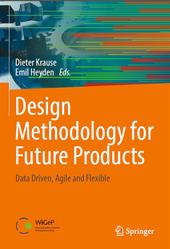
Agile Strategic Planning.
For long-term economic success, it is indispensable to always position oneself favourably in comparison to one’s competitors. It is necessary to plan new products for the long term and to identify future customer needs at an early stage. Thus, the product development process as a core element of creating new value propositions must be flanked by an innovation and strategic planning process. New product ideas must be continuously examined with regard to feasibility and fit on the basis of internal and external inputs. Promising ideas are investigated further and processed for product development by means of market studies, for example, while other ideas are put on hold to be re-evaluated at a later date. Likewise, planning of release strategies requires value-oriented and cross-domain views (Sahin et al. 2020).
Consequently, business models need to be robust regarding future influences. As emphasized in Sect. 1.1, Circular Economies are implemented by innovative business models treating sustainability as a beneficial objective. This is framed by the envisioned value proposition and targeted revenue channels. Assessing future influences on a business model, both internal factors as well as external factors have to be considered. This applies similarly to, for instance, requirements and their likelihood of change. For anticipating future customer needs and market developments, foresight methods such as the scenario technique can be used. The aim is to anticipate alternative pictures of the future that are consistent in themselves and heterogeneous in comparison, without considering probability of occurrence. Benefits of agility should be made available. Following the values and principles stated in the Agile Manifesto (Beck et al. 2001), several approaches were established in software engineering. Besides clear indications of positive effects, the extension of agility to products which are based on physical core products implies significant challenges regarding cultural and organizational challenges (Atzberger et al. 2020).
Contents.
Part I Methods for Product Development and Management.
1 From Agile Strategic Foresight to Sustainable Mechatronic and Cyber-Physical Systems in Circular Economies.
Iris Gräßler and Jens Pottebaum.
2 Model of SGE: System Generation Engineering as Basis for Structured Planning and Management of Development.
Albert Albers and Simon Rapp.
3 Technical Inheritance as an Approach to Data-Driven Product Development.
Roland Lachmayer and Iryna Mozgova.
4 Application of Agile Experiential Learning Based on Reverse
Engineering as Support in Product Development.
Frank Mantwill and Valentin Multhauf.
Part II Methods for Specific Systems and Products.
5 Improving Products by Combining Usability and Emotions.
Tina Buker, Jörg Miehling, and Sandro Wartzack.
6 Challenges in the Development of Biomechatronic Systems.
Marc Neumann and Beate Bender.
7 Design Methodologies for Sustainable Mobility Systems.
Dietmar Göhlich, Anne Magdalene Syré, Michel Joop van der Schoor, Dominic Jefferies, Alexander Grahle, and Ludger Heide
8 Methods for In Situ Sensor Integration.
Maximilian Hausmann, Eckhard Kirchner, Gunnar Vorwerk-Handing, and Peter Welzbacher.
Part III Facing the Challenges in Product Developmen.
9 Context-Adapted Methods of Modern Product Development: Recommendations and Best Practice Examples.
Daniel Roth and Hansgeorg Binz.
10 An Approach to Develop Designer-Centred Methods: Illustrated by an Example on How to Overcome Cognitive Bias in Product Development.
Sven Matthiesen, Thomas Nelius, and Matthias Eisenmann.
11 Data and Information Flow Design in Product Development.
Kristin Paetzold.
Part IV Model-Based Engineering in Product Development.
12 Model-Based Systems Engineering: A New Way for Function-Driven.
Product Development.
Stephan Husung, Christian Weber, and Atif Mahboob.
13 Function-Oriented Model-Based Product Development.
Georg Jacobs, Christian Konrad, Joerg Berroth, Thilo Zerwas, Gregor Höpfner, and Kathrin Spütz.
14 Model-Based Systems Engineering: Discovering Potentials for Methodical Modular Product Development.
Dieter Krause, Lea-Nadine Schwede, Florian M. Dambietz, and Michael Hanna.
15 Methodical Approaches for Engineering Complex Systems.
Thomas Vietor and Tobias Hu.
Бесплатно скачать электронную книгу в удобном формате, смотреть и читать:
Скачать книгу Design Methodology for Future Products, Krause D., Heyden E., 2022 - fileskachat.com, быстрое и бесплатное скачивание.
Скачать pdf
Ниже можно купить эту книгу, если она есть в продаже, и похожие книги по лучшей цене со скидкой с доставкой по всей России.Купить книги
Скачать - pdf - Яндекс.Диск.
Дата публикации:
Теги: учебник по английскому языку :: английский язык :: Krause :: Heyden
Смотрите также учебники, книги и учебные материалы:
Следующие учебники и книги:
 Commas, Mastering English Grammar, Moeller D., 2021 — Welcome to Book 7: Commas, a book that teaches how comma rules and stylish sentence structure go hand-in-hand. Книги по английскому языку
Commas, Mastering English Grammar, Moeller D., 2021 — Welcome to Book 7: Commas, a book that teaches how comma rules and stylish sentence structure go hand-in-hand. Книги по английскому языку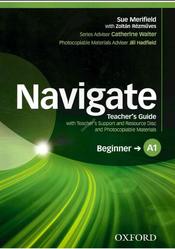 Navigate, Teacher’s Guide, Beginner A1, Merifield S., 2015 — Navigate, Teacher s Guide, Beginner A1, Merifield S., 2015. Navigate is an English language course for adults that incorporates current … Книги по английскому языку
Navigate, Teacher’s Guide, Beginner A1, Merifield S., 2015 — Navigate, Teacher s Guide, Beginner A1, Merifield S., 2015. Navigate is an English language course for adults that incorporates current … Книги по английскому языку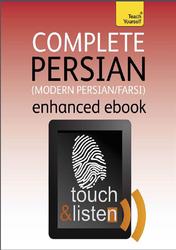 Complete modern persian farsi, Narguess F., 2010 — Modern Persian, also known as New Persian, is the linguistic continuation of Middle Persian, itself a successor to Old Persian, … Книги по английскому языку
Complete modern persian farsi, Narguess F., 2010 — Modern Persian, also known as New Persian, is the linguistic continuation of Middle Persian, itself a successor to Old Persian, … Книги по английскому языку University Rankings, Macleans Canadas Best Schools, Masse K., 2018 — Technology, health, energy, the economy engineers make a difference in all aspects of everyday life. McMaster Engineering faculty and students … Книги по английскому языку
University Rankings, Macleans Canadas Best Schools, Masse K., 2018 — Technology, health, energy, the economy engineers make a difference in all aspects of everyday life. McMaster Engineering faculty and students … Книги по английскому языку
Предыдущие статьи:
 A contrastive grammar of english and arabic, Khalil A.M., 1999 — This book is a contrastive study of English and Arabic at the phonological, morphological and syntactic levels. It is intended … Книги по английскому языку
A contrastive grammar of english and arabic, Khalil A.M., 1999 — This book is a contrastive study of English and Arabic at the phonological, morphological and syntactic levels. It is intended … Книги по английскому языку Italian At a Glance, Foreign Language Phrasebook and Dictionary At a Glance Series, Costantino M., 2018 — So you’re taking a trip to one of the many fascinating countries of the world. That’s exciting! This phrase book, … Книги по английскому языку
Italian At a Glance, Foreign Language Phrasebook and Dictionary At a Glance Series, Costantino M., 2018 — So you’re taking a trip to one of the many fascinating countries of the world. That’s exciting! This phrase book, … Книги по английскому языку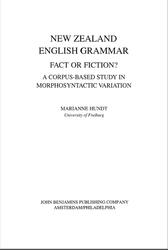 New Zealand English grammar, fact or fiction, Hundt M., 1998 — New Zealand English (NZE), like Canadian, South African and Australian English, belongs to those national varieties of English that are … Книги по английскому языку
New Zealand English grammar, fact or fiction, Hundt M., 1998 — New Zealand English (NZE), like Canadian, South African and Australian English, belongs to those national varieties of English that are … Книги по английскому языку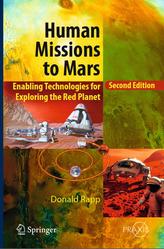 Human Missions to Mars, Enabling Technologies for Exploring the Red Planet, Rapp D., 2008 — Human missions to Mars represent the pinnacle of solar system exploration for the next half-century. In addition to providing a … Книги по английскому языку
Human Missions to Mars, Enabling Technologies for Exploring the Red Planet, Rapp D., 2008 — Human missions to Mars represent the pinnacle of solar system exploration for the next half-century. In addition to providing a … Книги по английскому языку




